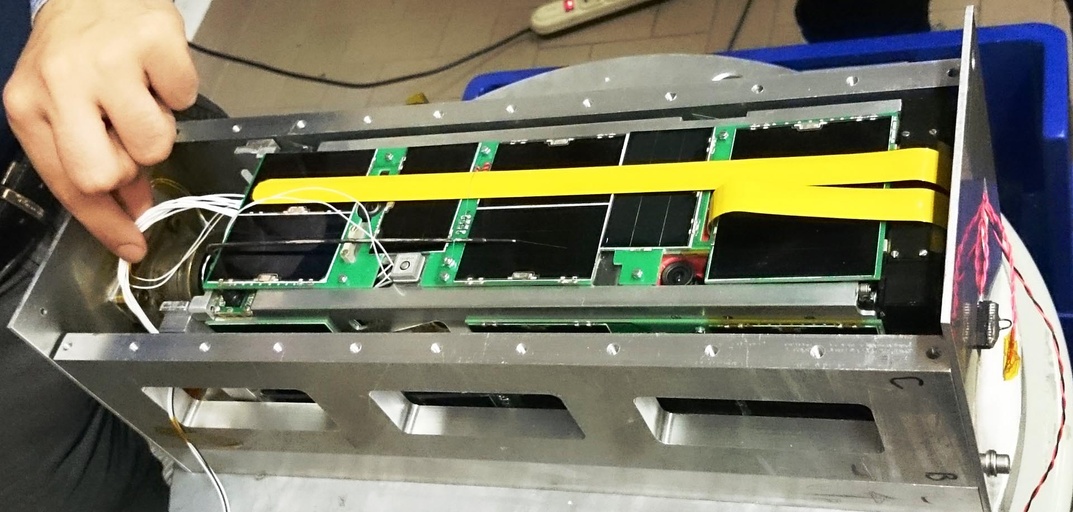
IO-117 is a satellite developed by the University of Naples, Italy, for growing vegetables (really!) The satellite carries a digital transponder. It operates in MEO orbit, an orbiting satellite characterized by long transit times and large coverage areas, making it a good candidate for DX.
Because it has a certain threshold, few HAMs in China will use this satellite. I am glad I learned to use it and used it to QSO with many distant stations. In order to let you understand and use it, I have written this article, and I hope you will like it.
I hope you will enjoy it. Also, please feel free to point out any non-exhaustive or wrong points.
Special thanks: BG7XWF, BI4KZZ
Device
Required equipment/software:
- UHF all-mode radio (e.g. IC-9700 IC-7100 TS-2000 FT-857)
- Yagi antenna with gain greater than or equal to 10dbd
- A computer running Windows system
- UZ7HO Soundmodem
- GreencubeDigi (or other decoder)
Optional equipment/software:
- Yagi antenna rotator
- Automatic frequency control software (e.g. gperdict, HRD Satellite)
Yagi antenna rotator and automatic frequency control software are especially recommended, which can save a lot of trouble. It is recommended to use YAGI antenna with 12dbd or more and add LNA amplifier to improve low elevation decoding rate.
Hardware setup
The following take IC-7100 for example, ICOM with the same brand of radio operation is similar, YAESU & Kenwood radio please feel for yourself (because I do not have YAESU or Kenwood radio, sorry)
Same as using FT8 data communication mode, adjust the radio to data communication mode.
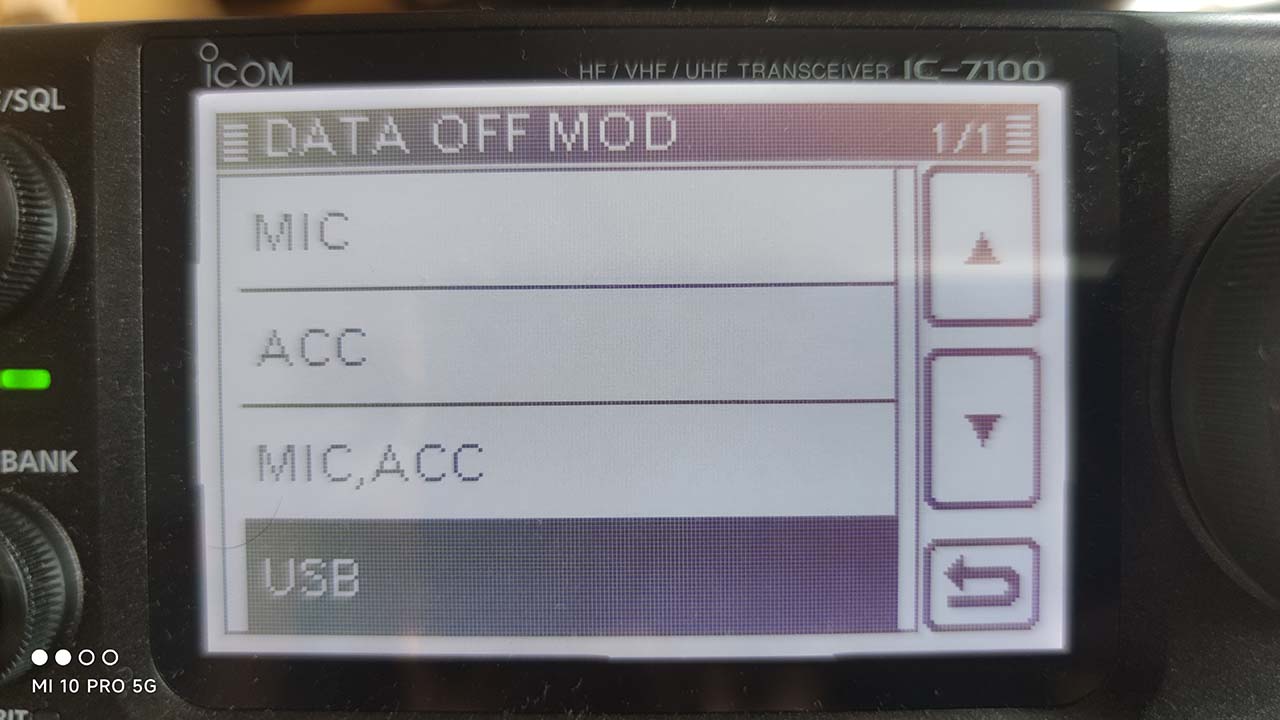
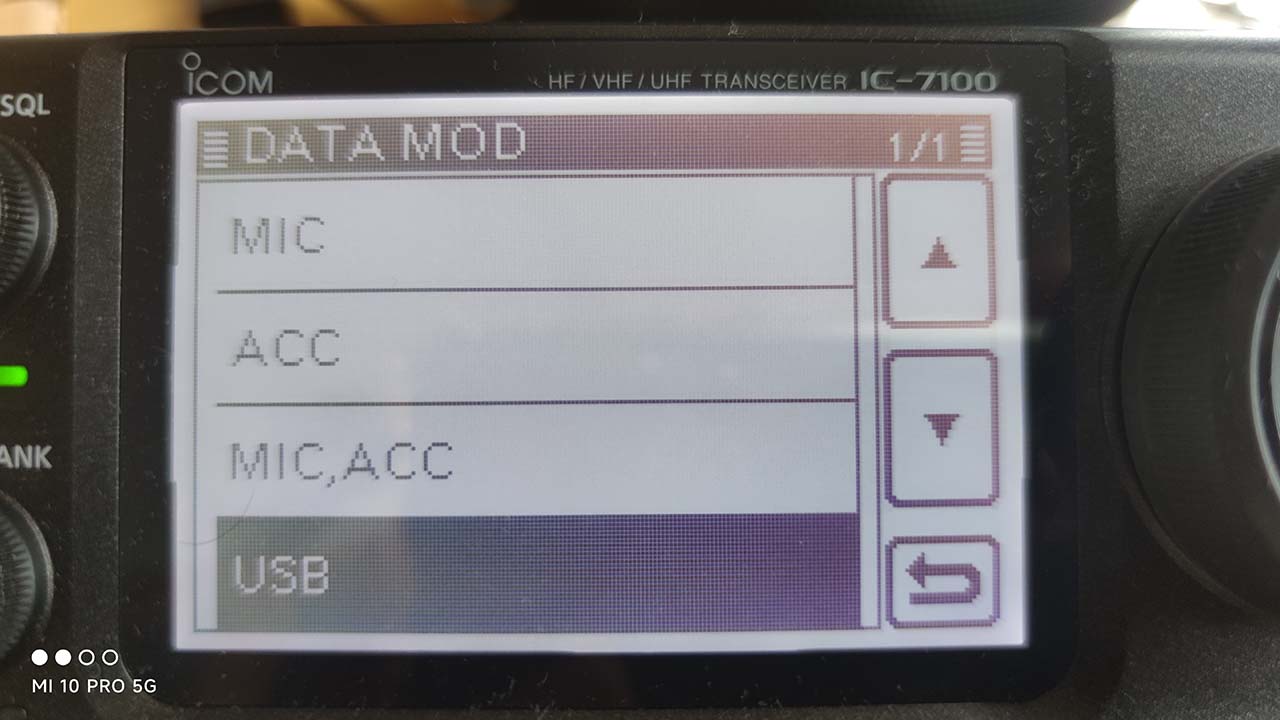
Turn on the radio SPLIT function, select USB mode, and then turn off radio squelch.
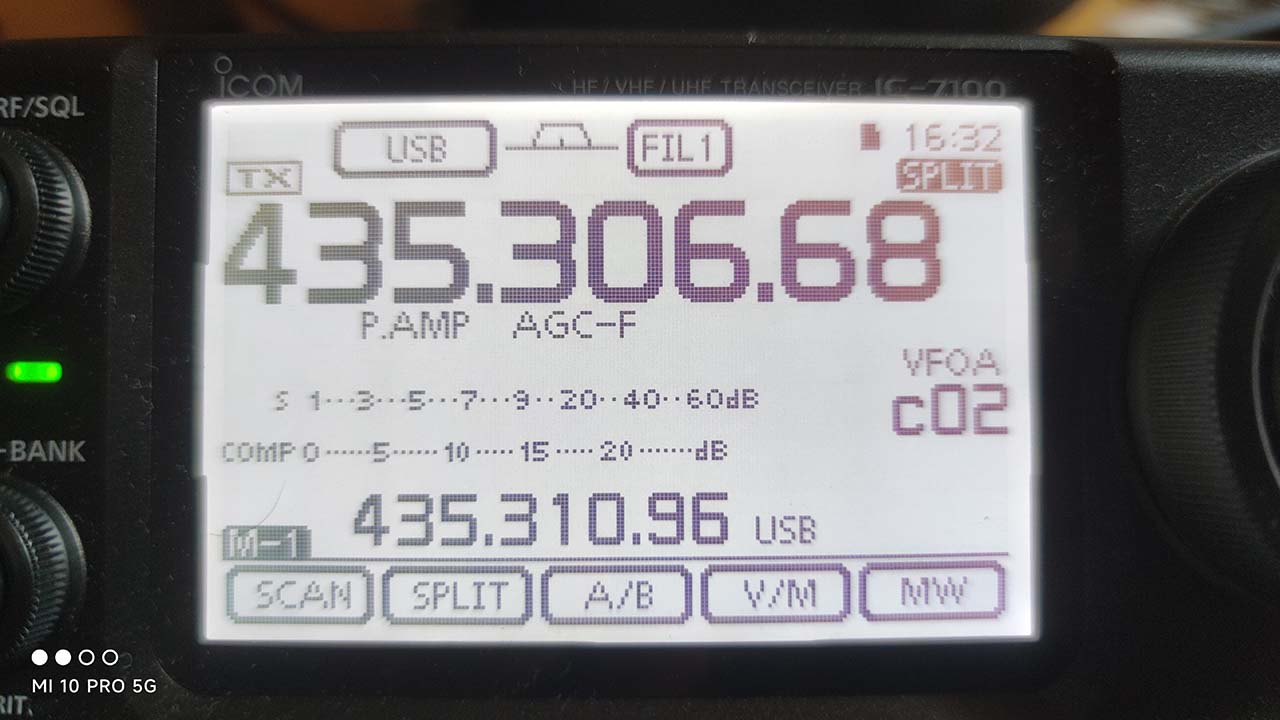
Software Setup
Open Soundmodem, select the sound card corresponding to the radio in Settings-Device->Sound Card
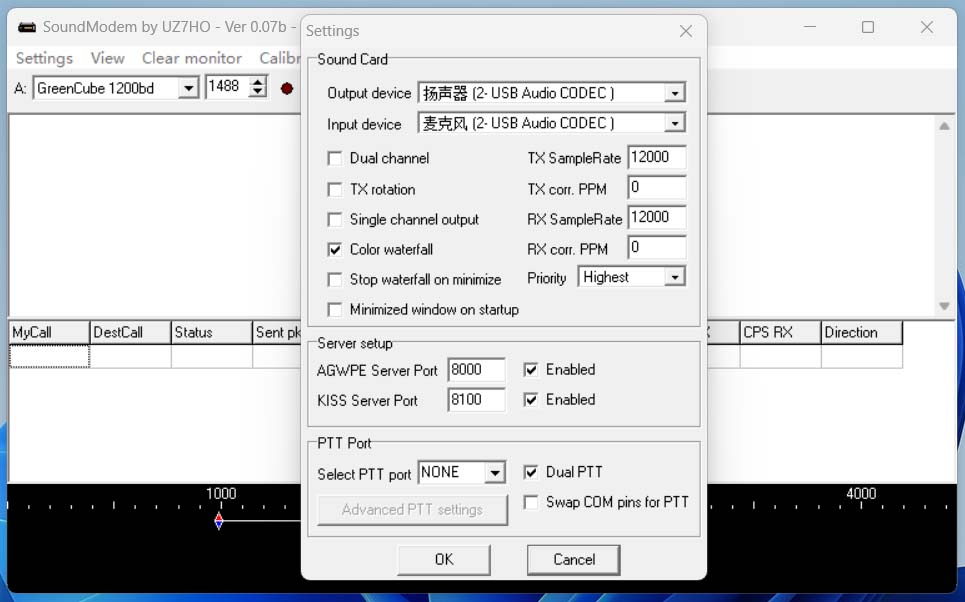
The PTT Port is set to the COM port of the radio so that it can automatically control the radio PTT (only some of the radio stations are supported, I didn't use it because the IC-7100 is not supported.)
Next, start the automatic frequency control software. Each software operation is not quite the same, it is recommended to consult the user manual of the software used.
Automatic frequency control will occupy a port, so if the radio only supports a single COM port and has the need for automatic PTT control, then please control the frequency manually.
If you operate manually, you can use Orbitron to calculate the frequency, set the reference frequency to 435.3088Mhz, and adjust it once every five minutes or so according to the Doppler frequency calculated by the software.
After opening the software, make sure "TNC:ON" is displayed in the bottom right corner, and then make the following settings
- Fill in your call sign in the "MYCALL" field
- ToCall do not change, leave empty
- ReTX Delay can be set at will, but will be refreshed by the value in the shortcut button
- Ch does not change
- Right click on the shortcut button above and fill in the information
- MSG at CQ is recommended to fill in your own grid
- MSG at INFO suggests "599 QSL?"
- MSG at 73 suggests "73"
- MSG at RRR suggests "RR 599"
- ToCall is not recommended to be changed
- Re-TX Delay depends on the antenna condition and is recommended to be set between 1 and 5

Start QSO
You will see a strip of GMSK signal on the spectrum diagram when the satellite is passing through. It may not be decoded successfully at this time, don't worry, first drag the horizontal bar on the spectrum chart to the signal, then wait for the signal strength to become higher, then you can decode it.
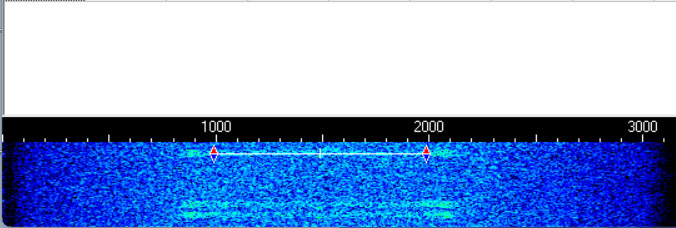
The information can be seen in GreencubeDigi after normal decoding.

Double click on the message bar will automatically fill in the call sign of the other party, and then directly press the shortcut button to send the message
By the way, if you don't set auto PTT, you have to remember to press the radio's PTT manually before pressing the shortcut button.
So far, you can easily contact half of the world through Greencube. Thank you for reading this article, and let's see you on Greencube, 73!

Comments